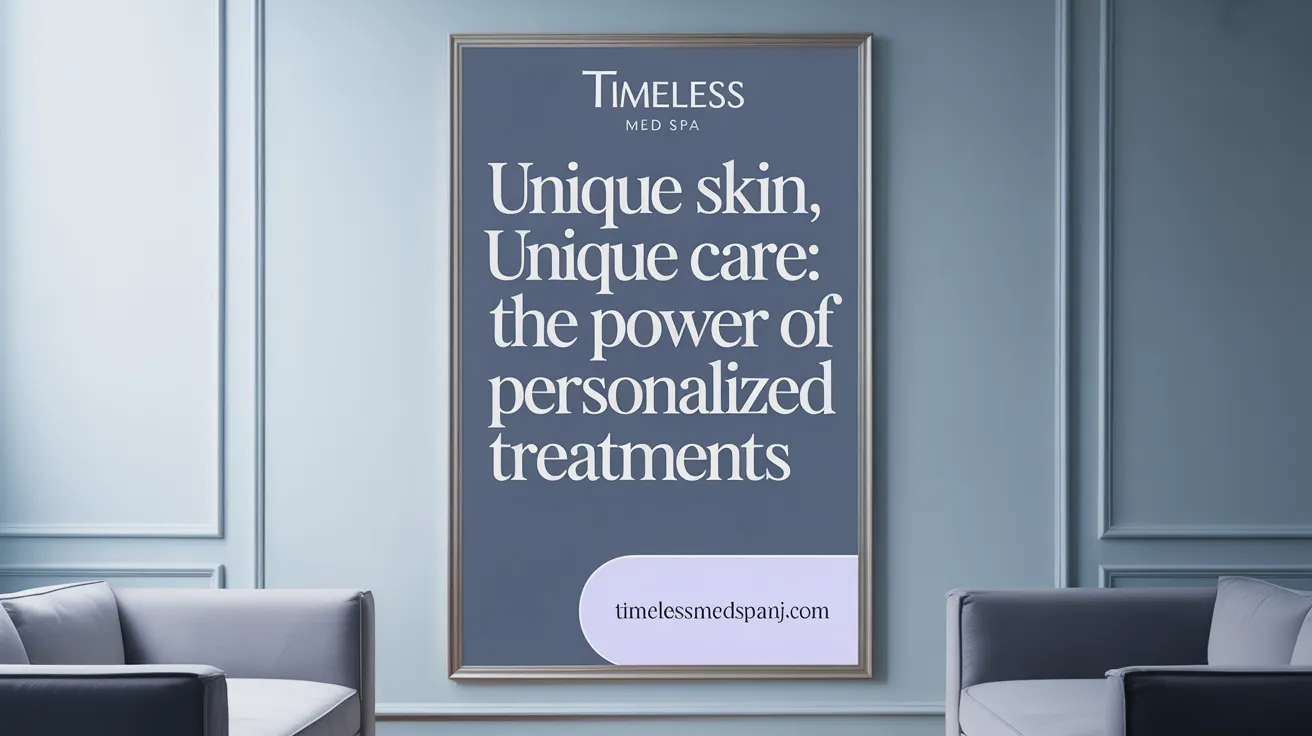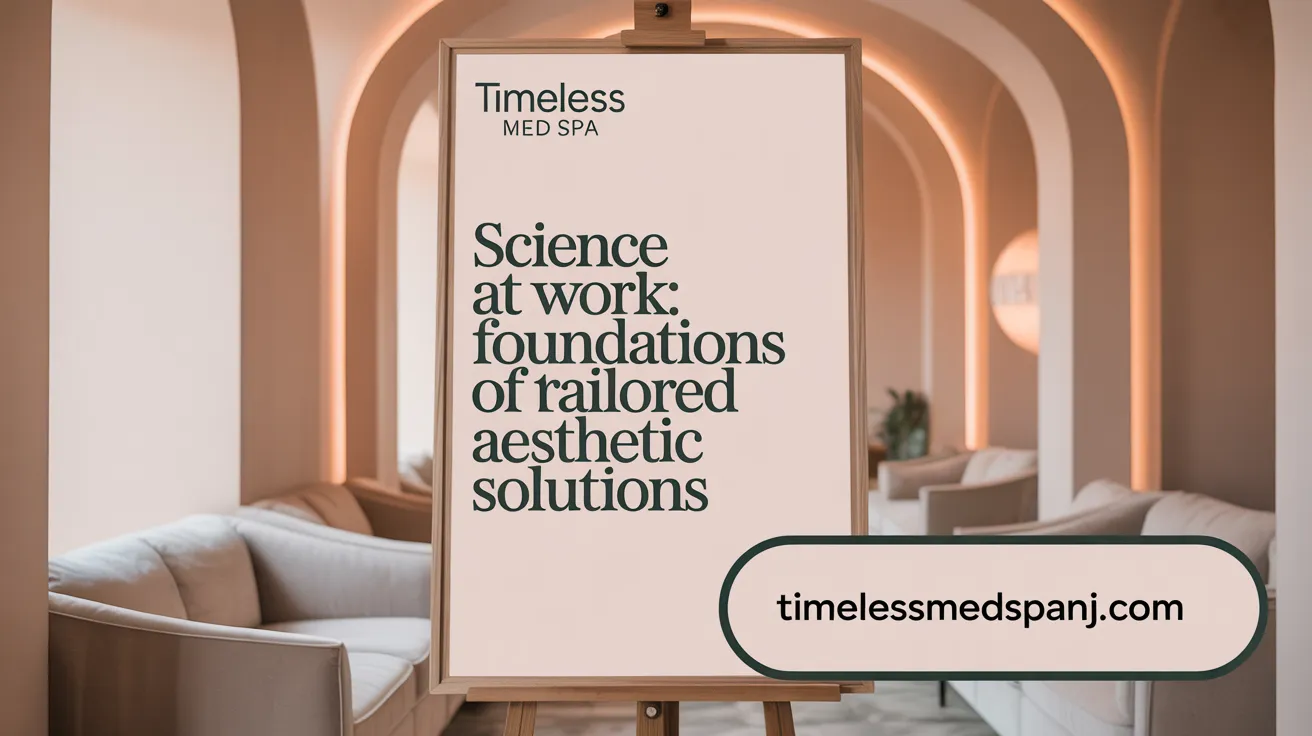Understanding Personalized Aesthetic Care
Personalized aesthetic treatment plans are revolutionizing skincare by focusing on the unique needs of each individual. These customized strategies go beyond one-size-fits-all approaches, allowing for treatments that consider specific skin types, concerns, and personal beauty goals. This article explores the detailed process of tailoring such plans, the science behind them, and how combining treatments can optimize outcomes for lasting skin health and radiance.
Personalization Fundamentals: How Skin Types and Concerns Shape Treatment Plans
How are aesthetic treatment plans personalized based on individual skin types and concerns?
Creating effective aesthetic plans involves a detailed understanding of each person’s unique skin characteristics. Central to this is an in-depth skin assessment, initially conducted during a consultation with a qualified professional. This assessment considers multiple factors such as skin type, age, lifestyle, and specific concerns like pigmentation, fine lines, or acne.
Utilizing advanced tools like the Visia Complexion Analysis allows practitioners to capture high-resolution images and detailed data on skin health. These insights help identify areas needing attention, such as wrinkles, spots, textures, and pigmentation. With this information, personalized treatment strategies are developed.
A typical plan combines various treatments tailored to the individual’s needs. It might include facials, chemical peels, laser therapies, injectables like Botox or fillers, and customized skincare products. For example, a patient with dry skin may receive hydration-focused treatments with hyaluronic acid, while someone with acne-prone skin might benefit from targeted peels and proper topical products.
The importance of ongoing evaluation cannot be overstated. Regular follow-up assessments ensure that treatments are adjusted over time, responding to changes in skin condition. This personalized approach maximizes results, enhances safety, and aligns with each person's long-term beauty and wellness goals.
Furthermore, the integration of AI and advanced analysis tools improves precision. These technologies enable practitioners to select the most appropriate procedures and monitor progress, setting the stage for safer, more effective aesthetic outcomes.
The Critical Importance of Tailoring Treatments to Individual Goals and Skin Characteristics

Why is it important to tailor skincare treatments to individual goals and skin characteristics?
Every person's skin is distinct, with its own unique needs and sensitivities. For this reason, personalized treatment plans are essential in achieving the best outcomes. These plans are created through comprehensive skin assessments, where professionals evaluate skin type, age, concerns, lifestyle, and goals.
Customized treatments directly target specific issues. For example, a person dealing with acne may benefit from chemical peels or targeted topical ingredients, while someone seeking anti-aging results might focus on injectables, laser therapies, or collagen-boosting procedures.
Using advanced tools, such as the Visia Complexion Analysis, practitioners can obtain detailed data about skin conditions, like wrinkles or pigmentation. This information guides them to select the most effective treatment options, such as laser therapy or tailored skincare products. Adjusting treatments over time based on ongoing assessments ensures continuous improvement.
Personalized skincare minimizes risks by considering an individual's allergies and sensitivities. Selecting appropriate ingredients, such as hyaluronic acid for dry skin or salicylic acid for acne-prone skin, reduces the chance of adverse reactions.
Furthermore, tailoring treatments enhances patient satisfaction. When each plan aligns with personal goals, whether for skin rejuvenation, managing acne, or reducing signs of aging, individuals are more motivated and likely to adhere to their routines.
Overall, individualized care promotes long-term skin health by addressing specific concerns effectively and safely. It ensures each person’s journey towards healthier, more radiant skin is guided by professional expertise and personalized strategies.
Crafting Customized Aesthetic Strategies: The Step-by-Step Process

What is the process of creating customized aesthetic treatment strategies?
Developing personalized aesthetic plans involves multiple steps rooted in thorough assessment and expert judgment. The journey begins with an initial consultation where the practitioner reviews the client’s skin type, texture, and overall condition. This stage includes a detailed discussion of the client’s medical history, lifestyle, and specific aesthetic goals.
To ensure precise evaluation, practitioners often use specialized methodologies like AART™—which stands for Assessment, Anatomy, Range, and Treatment—and tools such as the Facial Assessment Scale (FAS™). These techniques help systematically analyze facial features, identify treatment priorities, and understand the individual’s unique anatomy.
Based on this comprehensive analysis, a tailored treatment plan is designed, incorporating a combination of procedures like injectables—such as Botox and dermal fillers—as well as laser therapies, chemical peels, or customized skincare products. The plan aims to address specific concerns, whether it’s anti-aging, skin rejuvenation, or other aesthetic goals.
To maximize safety and effectiveness, practitioners set realistic expectations. They often discuss the number of sessions needed, possible outcomes, and any necessary adjustments along the way. This holistic, evidence-based approach ensures that each client receives a treatment strategy aligned with their needs, utilizing the latest technologies and expert insights to produce natural-looking, satisfying results.
Combining Aesthetic Procedures for Enhanced, Personalized Results

What are the different aesthetic procedures that can be combined for personalized outcomes?
Aesthetic treatments can be tailored by combining various procedures to address multiple skin concerns at once. For example, Botox is often paired with dermal fillers to both relax wrinkles and restore volume, providing a youthful appearance. Microneedling combined with chemical peels enhances skin texture and promotes collagen production, improving skin radiance and reducing scars.
Laser treatments can be combined with PDO threads to tighten skin, while radiofrequency (RF) therapy alongside injectables like hyaluronic acid can boost skin firmness and hydration. These combinations are designed based on individual needs, targeting issues such as aging, acne scars, pigmentation, and skin laxity.
Implementing multiple procedures in a strategic sequence maximizes benefits while minimizing downtime. An experienced aesthetic professional oversees the timing and safety of these combinations, ensuring each treatment complements the other.
This personalized approach leads to more comprehensive results, often achieving longer-lasting improvements and reducing the need for repeated treatments. Proper planning and professional guidance are crucial to harness the full potential of these combined procedures, making the outcomes not only effective but also safe.
Scientific Principles Guiding Personalized Aesthetic Treatment Optimization

What scientific principles guide the optimization of aesthetic treatments for unique skin needs?
The process of customizing aesthetic treatments relies heavily on scientific understanding of skin biology, including how the skin heals and responds to various interventions. Fundamental principles such as dermatological physiology, tissue repair, and wound healing mechanisms inform how and when treatments are applied.
To create effective, tailored plans, practitioners use assessment tools like the Facial Assessment Scale (FAS™) and the AART-HIT™ methodology. These tools systematically evaluate skin quality, facial structure, and signs of aging, enabling precise profiling of each patient’s unique condition.
Understanding the anatomy of the face in detail is critical. Knowledge of the layered structure — including muscles, fat, bone, and skin — allows for targeted treatments like injectables or laser therapies, considering age-related changes such as volume loss or skin laxity.
The mechanisms by which products and energy-based devices work are supported by scientific evidence. For example, hyaluronic acid enhances skin hydration by attracting water molecules, while energy devices like lasers stimulate collagen production through controlled thermal injury. This not only improves skin texture but also promotes natural rejuvenation.
Incorporating emerging technological advancements like artificial intelligence (AI) further refines treatment precision. AI tools analyze data objectively, assisting practitioners in selecting the most appropriate interventions and predicting outcomes with greater accuracy.
Overall, these scientific principles ensure that each treatment plan aligns with the patient’s unique skin physiology, structural characteristics, and aesthetic goals—maximizing safety and effectiveness.
The Role of Professional Consultation in Ensuring Effective and Safe Treatment Plans

Why is the expertise of a qualified aesthetic practitioner crucial?
A skilled professional plays an essential role in designing personalized treatment plans. They have the knowledge of various skin treatments, technologies, and artistry needed to achieve natural-looking results. Their assessment ensures that treatments match each individual’s skin type, concerns, and goals. This reduces risks and improves effectiveness, making safety a top priority.
What are the main components of an effective consultation?
During a consultation, the practitioner evaluates several factors:
- Skin type and condition
- Lifestyle and skincare routine
- Medical history and sensitivities
- Specific beauty and wellness goals
Understanding these elements helps in developing a customized plan that targets specific skin issues, whether it’s anti-aging, acne, or skin rejuvenation.
How do continuous assessments improve treatment outcomes?
Personalized plans aren’t static. Regular follow-up consultations allow practitioners to monitor progress, assess results, and make necessary adjustments. Technologies like the Visia Complexion Analysis provide detailed skin data, showing changes such as improvements in wrinkles, spots, and texture over time. This ongoing evaluation ensures the treatments stay aligned with the client's evolving skin needs.
How does technology support personalized treatment planning?
Advanced tools like Visia help gather precise, quantifiable information about the skin. High-resolution images and detailed analysis guide practitioners to select suitable therapies such as chemical peels, laser treatments, or targeted skincare products. Using these insights, treatments can be finely tuned to maximize effectiveness and safety.
Why is client education important?
Besides planning and executing treatments, professionals also educate clients. Clear communication about what to expect, appropriate skincare routines, and ingredient choices helps clients understand their skin's needs. Follow-up discussions ensure clients are informed and engaged, which enhances overall satisfaction and helps in achieving long-term skin health.
| Aspect | Focus | Benefit |
|---|---|---|
| Practitioner expertise | Assessment, planning, adjustments | Safe, individualized treatment plans |
| Consultations | Skin type, lifestyle, goals | Targeted, effective treatments |
| Technology | Visia analysis | Data-driven decisions |
| Client education | Expectations, skincare routines | Better results and satisfaction |
Unlocking the Power of Personalization in Aesthetic Care
Personalized aesthetic treatment plans represent a paradigm shift in skincare, emphasizing the individuality of each person's skin and beauty aspirations. Through thorough consultations, advanced scientific methodologies, and expert knowledge, practitioners craft tailored strategies that optimize safety, effectiveness, and natural-looking results. Combining multiple procedures and employing continuous assessment ensures treatments evolve with changing skin needs, offering lasting improvements and enhanced satisfaction. Embracing this personalized approach empowers individuals to achieve their unique skin goals confidently and sustainably, highlighting the vital role of customization in modern aesthetic care.
References
- A Guide to Personalized Aesthetic Treatment Plans
- 4 Skin Treatments You Can Combine for Maximum Results
- How Personalized Treatment Plans Transform Your Look
- The Importance of Personalized Treatments
- How an Aesthetic Consultation Can Tailor Your Skincare ...
- A Guide to Personalized Aesthetic Treatment Plans
- The Importance of Personalized Treatments
- AI in Aesthetics: Personalized Treatment Plans
- Personalizing Aesthetic Treatments: How to Achieve Optimal ...
